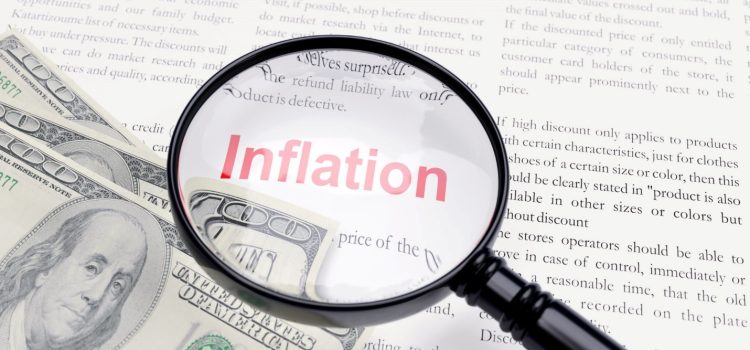
US Inflation Trends: What to Expect in the Coming Months
In recent times, inflation has been a significant topic of discussion among economists, policymakers, and the general public in the United States. As the country continues to navigate the economic aftermath of the COVID-19 pandemic, understanding the trends and potential future of inflation is crucial for making informed decisions. This article delves into the current state of US inflation, factors influencing its trajectory, and what we can expect in the coming months.
Current State of US Inflation
As of late 2023, the US inflation rate has shown signs of moderation after a period of heightened levels. The Consumer Price Index (CPI), a key measure of inflation, had surged to levels not seen in decades during the pandemic, driven by supply chain disruptions, increased consumer demand, and fiscal stimulus measures. However, recent data suggest a deceleration in the inflation rate, with the Federal Reserve’s efforts to tighten monetary policy playing a significant role.
Factors Influencing Inflation Trends
Several factors will continue to influence the trajectory of US inflation in the coming months. These include:
- Monetary Policy: The Federal Reserve’s stance on interest rates and its balance sheet policies will be pivotal. The central bank has been gradually increasing interest rates to curb inflation. The effectiveness of these measures in cooling down the economy without triggering a recession will be closely monitored.
- Supply Chain Dynamics: While some supply chain bottlenecks have eased, others persist. The global nature of supply chains means that disruptions in one part of the world can have cascading effects. Continued monitoring of these dynamics is essential for predicting inflation trends.
- Energy Prices: Energy prices, particularly oil and gas, have a direct impact on inflation. Geopolitical tensions, such as those involving major oil-producing nations, can lead to price volatility. The transition to renewable energy sources also adds a layer of complexity to energy price forecasts.
- Labor Market Conditions: The labor market has shown resilience, with low unemployment rates and rising wages. However, labor shortages in certain sectors and the potential for wage-price spirals remain concerns. The balance between wage growth and productivity will be a critical factor.
- Consumer Spending: Consumer behavior, influenced by factors such as disposable income, savings rates, and consumer confidence, will play a role in shaping inflation. High levels of consumer spending can drive demand-pull inflation, while a shift towards savings can have the opposite effect.
Near-Term Inflation Expectations
Given the current economic landscape, several scenarios could unfold in the near term:
- Gradual Decline in Inflation: If the Federal Reserve’s policies prove effective, we could see a gradual decline in inflation rates. This would require a delicate balance between tightening monetary policy and avoiding a severe economic slowdown. A soft landing, where inflation moderates without a significant rise in unemployment, is the ideal scenario.
- Persistent Inflation: If supply chain issues persist or energy prices remain volatile, inflation could stay elevated. In this scenario, the Federal Reserve might need to implement more aggressive rate hikes, which could increase the risk of a recession.
- Stagflation: A less likely but possible scenario is stagflation, where high inflation is accompanied by stagnant economic growth. This could occur if supply-side constraints intensify while consumer demand weakens. Policymakers would face the challenging task of addressing both inflation and economic stagnation simultaneously.
Long-Term Considerations
Looking beyond the immediate future, several long-term factors will shape the inflation landscape:
- Technological Advancements: Innovations in technology can lead to increased productivity and lower production costs, which can help mitigate inflationary pressures. However, the pace of technological adoption and its impact on various sectors will vary.
- Demographic Shifts: Aging populations and changes in workforce demographics can influence inflation. For instance, an aging population may lead to increased healthcare costs, while shifts in labor force participation rates can affect wage dynamics.
- Global Economic Trends: The interconnectedness of the global economy means that inflation trends in other major economies can impact the US. For example, inflationary pressures in major trading partners can affect import prices and overall inflation.
- Climate Change and Environmental Policies: The transition to a greener economy and the implementation of environmental policies can have inflationary effects. For instance, carbon pricing and regulations on emissions can increase production costs in certain industries.
Policy Implications
Policymakers face a complex task in managing inflation while supporting economic growth. The Federal Reserve will continue to play a central role, but fiscal policy measures, such as government spending and taxation, will also be crucial. Coordination between monetary and fiscal policies can enhance their effectiveness in achieving macroeconomic stability.
Moreover, policymakers must consider the distributional effects of inflation. High inflation can disproportionately impact low-income households, as they spend a larger share of their income on essentials such as food and energy. Targeted measures, such as social safety nets and subsidies, can help mitigate these effects.
Conclusion
In conclusion, the future of US inflation remains uncertain, with multiple factors at play. While recent trends suggest a potential moderation in inflation, various scenarios could unfold in the coming months. Policymakers will need to navigate these complexities carefully to achieve a balance between controlling inflation and supporting economic growth. For businesses and consumers, staying informed about inflation trends and their potential impacts will be essential for making strategic decisions in the months ahead.











